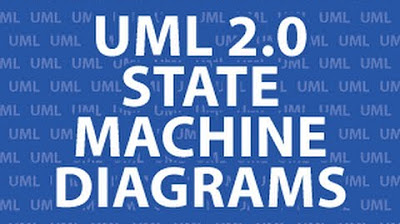Aggregation & Composition
Summary
TLDRThis transcript explains the difference between aggregation and composition in UML class diagrams. Aggregation represents a relationship where one class is related to multiple instances of another class, marked with an open diamond. However, it doesn’t define the lifetime of the objects involved. Composition, indicated by a filled diamond, implies that the constituent objects' lifetimes are tied to the container object. For instance, destroying a house also destroys its rooms, hence requiring composition. Aggregation is more flexible, like a room containing a table, where both can exist independently.
Takeaways
- 💡 Aggregation is commonly used in UML class diagrams to show a class's relation to multiple instances of another class.
- 🔷 Aggregation is an association adorned with an open diamond to signify its specific type.
- 📝 Aggregation doesn't specify much about the semantics or the lifetimes of the related objects.
- 🏠 In the example of a house and its rooms, aggregation may initially seem appropriate, but composition is actually better suited.
- 💥 Destroying a house would also destroy its rooms, making it a composition, which manages the lifetimes of its constituent objects.
- 🔒 In a composition, a constituent object can only belong to one composition at a time.
- ♻️ Compositions follow a transitive property, meaning objects like rooms and closets can form a hierarchical composition.
- 🛋️ Aggregation, in contrast, allows independent lifetimes of objects, such as a room and a table, where the room can be destroyed but the table can remain.
- ⚖️ Aggregation covers general relationships and doesn't impose rules on object lifetime management.
- 🏗️ Composition is used when one object takes responsibility for another's lifetime, as opposed to the looser relationship in aggregation.
Q & A
What is aggregation in UML class diagrams?
-Aggregation is a type of association in UML class diagrams that indicates a relationship where one class is associated with many instances of another class. It is represented by an open diamond and does not imply strong ownership or lifecycle dependency between the related objects.
How does aggregation differ from a regular association?
-Aggregation is a special type of association that signifies a whole-part relationship between objects, but it does not indicate strict ownership or responsibility for the lifecycle of the objects involved.
What is composition in UML class diagrams?
-Composition is a stronger form of association than aggregation. It implies that the constituent objects (parts) cannot exist independently of the whole. If the whole is destroyed, the parts are destroyed as well. It is represented by a filled diamond in UML diagrams.
What is a key distinction between aggregation and composition?
-The key distinction is that composition implies ownership and lifecycle dependency, meaning if the whole is destroyed, the parts are also destroyed. Aggregation, on the other hand, allows the parts to exist independently of the whole.
Why would you use composition instead of aggregation for a 'House' and 'Room' relationship?
-In the case of a 'House' and 'Room' relationship, composition is more appropriate because if the house is destroyed, the rooms would be destroyed as well. This indicates that the lifetime of the rooms depends on the lifetime of the house.
When would you use aggregation for a 'Room' and 'Table' relationship?
-Aggregation is appropriate for a 'Room' and 'Table' relationship because the table can exist independently of the room. The room can be destroyed while the table remains intact, so their lifetimes are separate.
What does the open diamond symbol represent in a UML diagram?
-The open diamond symbol in a UML diagram represents aggregation, indicating a whole-part relationship where the parts can exist independently of the whole.
What does the filled diamond symbol represent in a UML diagram?
-The filled diamond symbol in a UML diagram represents composition, indicating a strong ownership relationship where the parts are dependent on the whole for their existence.
How does composition enforce a transitive relationship?
-In composition, the transitive property applies, meaning that if a 'House' has 'Rooms' and a 'Room' has 'Closets', the closets are also part of the house. This reflects the responsibility of the whole for managing the lifetimes of all constituent objects.
Why is aggregation considered a more general form of association?
-Aggregation is considered a more general form of association because it does not impose strict rules about the ownership or lifecycle of the related objects, allowing them to exist independently of each other.
Outlines

Dieser Bereich ist nur für Premium-Benutzer verfügbar. Bitte führen Sie ein Upgrade durch, um auf diesen Abschnitt zuzugreifen.
Upgrade durchführenMindmap

Dieser Bereich ist nur für Premium-Benutzer verfügbar. Bitte führen Sie ein Upgrade durch, um auf diesen Abschnitt zuzugreifen.
Upgrade durchführenKeywords

Dieser Bereich ist nur für Premium-Benutzer verfügbar. Bitte führen Sie ein Upgrade durch, um auf diesen Abschnitt zuzugreifen.
Upgrade durchführenHighlights

Dieser Bereich ist nur für Premium-Benutzer verfügbar. Bitte führen Sie ein Upgrade durch, um auf diesen Abschnitt zuzugreifen.
Upgrade durchführenTranscripts

Dieser Bereich ist nur für Premium-Benutzer verfügbar. Bitte führen Sie ein Upgrade durch, um auf diesen Abschnitt zuzugreifen.
Upgrade durchführen5.0 / 5 (0 votes)






